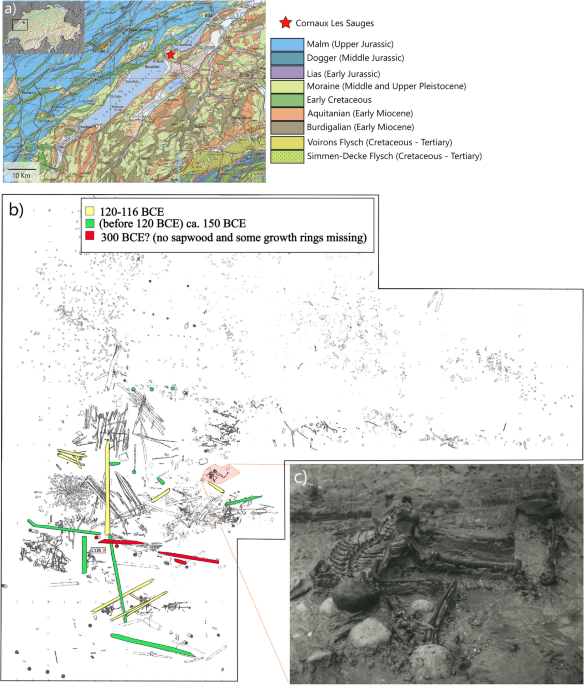mount123
Active member
- Messages
- 1,008
- Reaction score
- 699
- Points
- 113
- Location
- ILLYRIA
- Y-DNA haplogroup
- J2b-L283>Y126399
- mtDNA haplogroup
- J1c7a

Geographic origin, ancestry, and death circumstances at the Cornaux/Les Sauges Iron Age bridge, Switzerland - Scientific Reports
Cornaux/Les Sauges (Switzerland, Late Iron Age) revealed remnants of a wooden bridge, artifacts, and human and animal skeletal remains. The relationship between the collapsed structure and the skeletal material, whether it indicates a potential accident or cultural practices, remains elusive. We...
